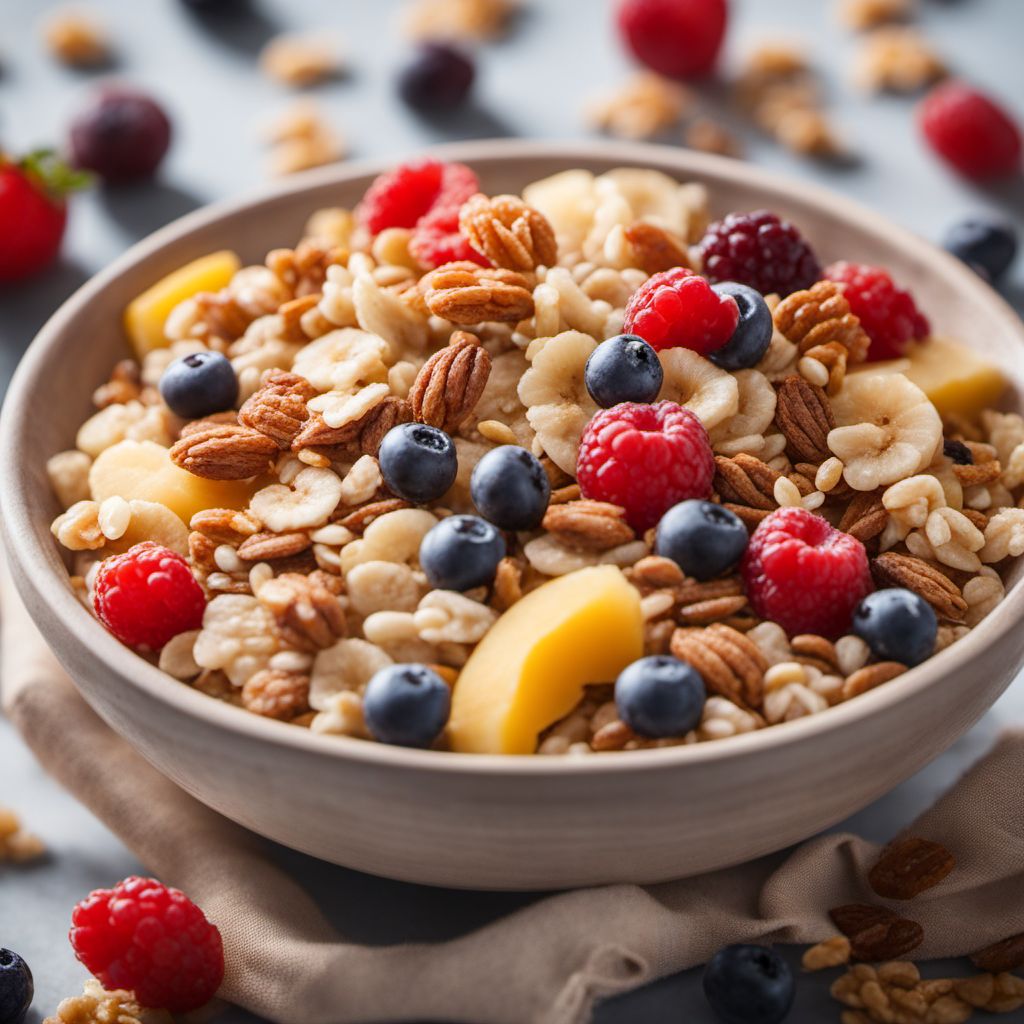
Ingredient
Mixed breakfast cereals
Rise and Shine: A Symphony of Flavors in Mixed Breakfast Cereals
Mixed breakfast cereals are a combination of various grains, seeds, nuts, and dried fruits, carefully blended to create a delightful and wholesome breakfast option. These cereals come in a wide range of flavors, from crunchy to chewy, and offer a diverse array of textures. With their vibrant colors and enticing aromas, mixed breakfast cereals are not only visually appealing but also provide a satisfying and nourishing start to your day.
Origins and history
The concept of mixed breakfast cereals can be traced back to the late 19th century when Dr. John Harvey Kellogg introduced the first commercially available cereal, known as "Granula." Over time, the popularity of breakfast cereals grew, and manufacturers began experimenting with different combinations of grains, fruits, and nuts to create a variety of options. Today, mixed breakfast cereals have become a staple in households worldwide, offering a convenient and nutritious breakfast choice.
Nutritional information
Mixed breakfast cereals are a nutritional powerhouse, providing a good source of fiber, vitamins, and minerals. They are often fortified with essential nutrients like iron and B vitamins, making them a valuable addition to a balanced diet. A typical serving of mixed breakfast cereals contains around 150-200 calories, depending on the specific blend and portion size.
Allergens
Some mixed breakfast cereals may contain allergens such as nuts or gluten. It is important to carefully read the ingredient list and allergen information on the packaging to ensure it is suitable for individuals with specific dietary restrictions or allergies.
How to select
When selecting mixed breakfast cereals, look for options that have minimal added sugars and are made with whole grains. Check the ingredient list to ensure it contains a variety of grains, nuts, seeds, and dried fruits. Opt for cereals that are low in sodium and free from artificial additives or preservatives.
Storage recommendations
To maintain the freshness and quality of mixed breakfast cereals, store them in a cool, dry place in an airtight container. This helps to prevent moisture absorption and keeps the cereals crisp and flavorful. Avoid exposing them to direct sunlight or extreme temperatures, as this can affect their texture and taste.
How to produce
While it is not feasible for amateurs to produce commercially blended mixed breakfast cereals, individuals can create their own custom blends at home by combining their favorite grains, nuts, seeds, and dried fruits. Simply mix the desired ingredients in the desired proportions and store in an airtight container for future use.
Preparation tips
Mixed breakfast cereals can be enjoyed in various ways. They can be served with milk or yogurt, topped with fresh fruits or honey, or even used as a crunchy addition to smoothie bowls. For added flavor, consider toasting the cereals lightly before serving. Experiment with different combinations and toppings to create your own personalized breakfast masterpiece.
Culinary uses
Mixed breakfast cereals are primarily used as a breakfast option, enjoyed with milk or yogurt. They can also be incorporated into baked goods such as muffins or granola bars, providing a delightful crunch and added nutrition. Additionally, they can be used as a topping for desserts or as a component in homemade trail mixes.
Availability
Mixed breakfast cereals are widely available in grocery stores, supermarkets, and online retailers worldwide.
